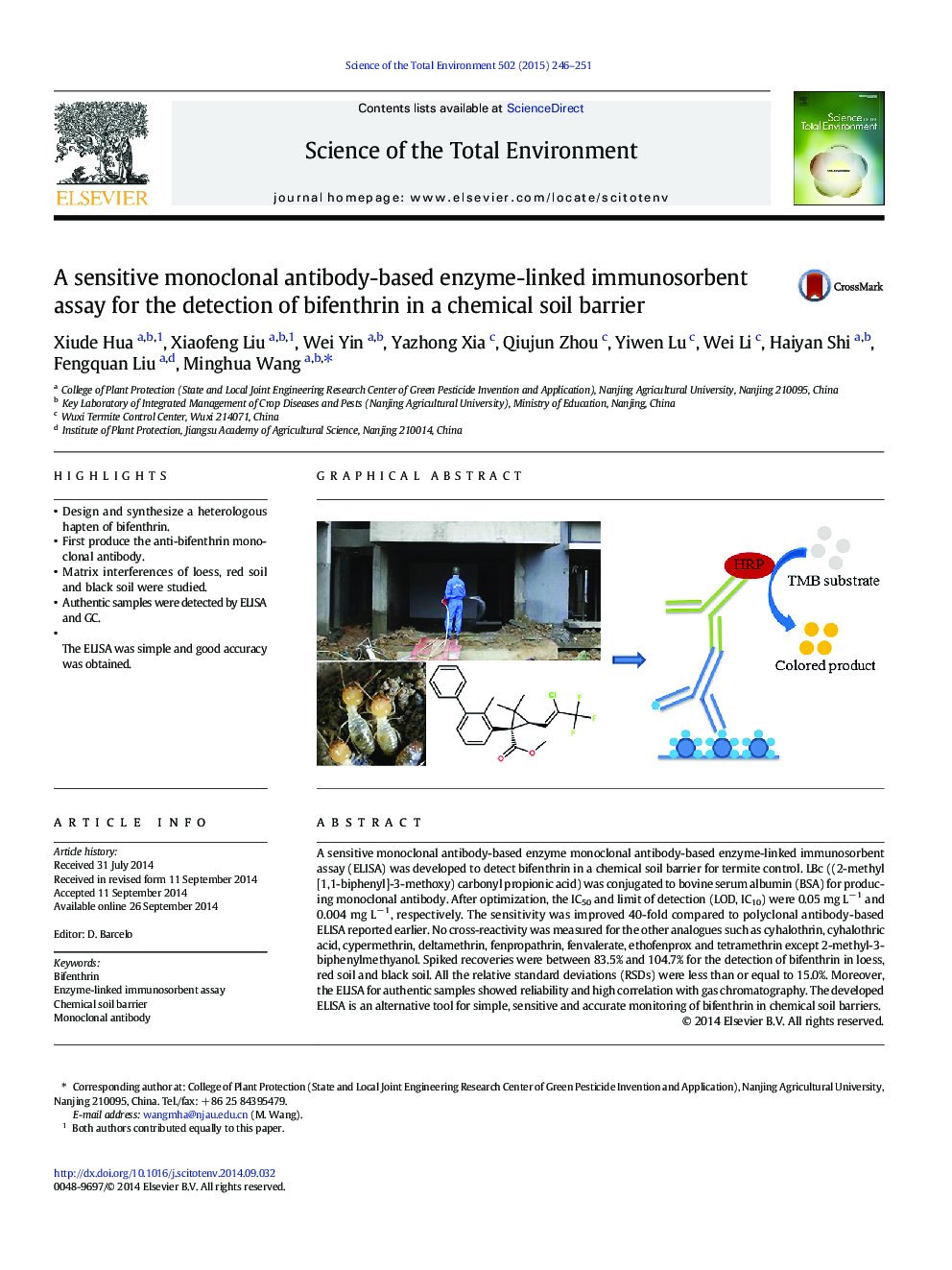| Article ID | Journal | Published Year | Pages | File Type |
|---|---|---|---|---|
| 6328432 | Science of The Total Environment | 2015 | 6 Pages |
â¢Design and synthesize a heterologous hapten of bifenthrin.â¢First produce the anti-bifenthrin monoclonal antibody.â¢Matrix interferences of loess, red soil and black soil were studied.â¢Authentic samples were detected by ELISA and GC.â¢The ELISA was simple and good accuracy was obtained.
A sensitive monoclonal antibody-based enzyme monoclonal antibody-based enzyme-linked immunosorbent assay (ELISA) was developed to detect bifenthrin in a chemical soil barrier for termite control. LBc ((2-methyl[1,1-biphenyl]-3-methoxy) carbonyl propionic acid) was conjugated to bovine serum albumin (BSA) for producing monoclonal antibody. After optimization, the IC50 and limit of detection (LOD, IC10) were 0.05 mg Lâ 1 and 0.004 mg Lâ 1, respectively. The sensitivity was improved 40-fold compared to polyclonal antibody-based ELISA reported earlier. No cross-reactivity was measured for the other analogues such as cyhalothrin, cyhalothric acid, cypermethrin, deltamethrin, fenpropathrin, fenvalerate, ethofenprox and tetramethrin except 2-methyl-3-biphenylmethyanol. Spiked recoveries were between 83.5% and 104.7% for the detection of bifenthrin in loess, red soil and black soil. All the relative standard deviations (RSDs) were less than or equal to 15.0%. Moreover, the ELISA for authentic samples showed reliability and high correlation with gas chromatography. The developed ELISA is an alternative tool for simple, sensitive and accurate monitoring of bifenthrin in chemical soil barriers.
Graphical abstractDownload full-size image
